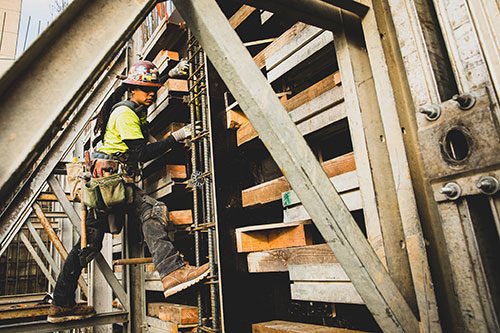Fitting PPE to female workers
How are women represented when it comes to PPE?

Responding is Robin Skillings, vice president and global general manager, KEEN Utility, Portland, OR.
Historically, women have been vastly underserved when it comes to representation and accessibility to properly fitting personal protective equipment. We’ve seen generations of women forced to modify PPE built for a male frame because of a lack of product availability. The result: an entire segment of the workforce dealing with poorly fitted safety boots as well as ill-fitting gloves, belts, harnesses, respirators and more that were originally designed for the anatomy and frame of a man.
One of the solutions to closing the skills gap and ensuring a strong workforce in the future within the skilled trades is the support and empowerment of female workers. According to labor force statistics from the Current Population Survey, although the construction industry lost 587,000 jobs in 2020, the number of women in the construction actually grew to almost 1.2 million. Further, the amount of women working in construction increased between 2012 and 2020. According to the same survey, in 2020, the share of women in the industry rose to 10.9% – a 0.6% increase from the previous year.
This growing segment of workers absolutely requires PPE built for their unique anatomy, just as men have had for years. Today, many women find the PPE available to them isn’t only uncomfortable, it’s unable to do its job effectively. Fortunately, many manufacturers are breaking the mold and creating PPE built for the end user, including women.
Safety footwear is an excellent example of how fit matters. The differences in bone structure, size, width and shape of men’s and women’s feet are enough to require unique options. Women tend to be smaller, and their bones and tendons are shaped differently. This impacts how they move, walk, stand and distribute weight. For years, they were often limited to the smallest size they could find in a men’s safety boot. The results could vary from a poor fit – causing hot spots, blisters and abrasions – to improper sizing, leading to lack of support or unneeded bulk, which could cause discomfort or more serious slips, trips and falls.
It should be noted that women’s PPE is no less capable or durable than men’s – the differences often have more to do with design and fit rather than materials. Women in the market for PPE should seek out brands that design and fit products for the biomechanics of their bodies.
Addressing the safety needs of tradeswomen goes a long way toward creating a more inclusive work environment. Offering the right protection for the job can have a significant effect on workers’ overall happiness and comfort while completing a day of hard work. By raising the bar for women’s PPE, we can ensure all employees feel safe and empowered to succeed on the job.
Editor's note: This article represents the independent views of the author and should not be construed as a National Safety Council endorsement.
Post a comment to this article
Safety+Health welcomes comments that promote respectful dialogue. Please stay on topic. Comments that contain personal attacks, profanity or abusive language – or those aggressively promoting products or services – will be removed. We reserve the right to determine which comments violate our comment policy. (Anonymous comments are welcome; merely skip the “name” field in the comment box. An email address is required but will not be included with your comment.)

